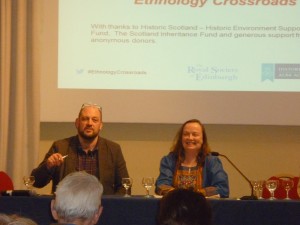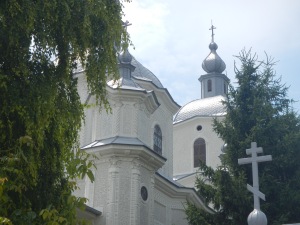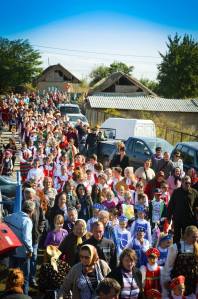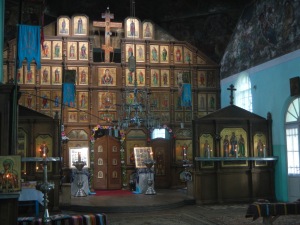by Katerina Strani

A café. Once a dedicated space where people gathered to discuss culture and politics. A space of arguing, debating, learning. A space where public opinion was formed and authority was challenged, contested, or at least influenced. A public sphere: a communicative space where people gathered to talk about public matters – politics.
Their aim – to form public opinion and to influence government.
Today, public spheres have evolved into more complex, more sophisticated spaces but also equally more diffuse and more informal. Think of online platforms such as blogs, twitter, facebook. A public sphere does not have to be a physical space waiting to be used, as these online platforms have proved. Instead, public spheres are spaces of communication that emerge with communication and die out when communication stops, when there is nothing left to debate.
Also, nowadays people are constantly bombarded with information and opinions, they have become more knowledgeable, but also more passionate about certain economic and political issues. Political debates are not a privilege of the elite anymore. Again, think of online platforms such as blogs, twitter, facebook. Think of public squares such as Tahrir square during the Arab spring, Syntagma square during the Greek financial crisis, or Taksim square during the demonstrations in Turkey in 2013. Anyone can join the debate, anyone can make themselves heard, anyone can influence public opinion – right???
Well, not really.
In order to participate in online public spheres, for instance, you need to have access to a computer and an internet connection. With this prerequisite, we’ve already narrowed down participation by about half (and having access to technology doesn’t mean you can use it)… But that has always been the case. In ancient public spheres, for example, such as the Forum in Rome or the Agora in Athens, only a tiny proportion of citizens actually participated in the debate. Only free-born male landowners and citizens of Rome or Athens, so no women, no foreigners, no slaves. Fast-forward to the 18th – 19th centuries and the situation hasn’t really changed. An eminent German philosopher with the name Jürgen Habermas writes that the public spheres of that time, such as coffeehouses and salons were composed of male citizens who had property in their name. These people communicated – allegedly – through the public use of reason.
So there has always been some form of gatekeeping – be it gender, financial status, nationality. Today most of these barriers are not relevant anymore, but there is one that still persists : language. It’s funny, language, be it spoken or signed, is at the heart of communication and yet multilingualism seems to be largely ignored in communication studies. An increasingly globalised world means that public spheres are becoming more multilingual, more multicultural. It means that people can participate in public life by speaking a language different from their ‘native’ one, or if that’s not possible, use the medium of translation or interpreting. If you ask me, this has always been the case but it has been largely bracketed, to use Nancy Fraser‘s term.
So what do we see today? A rise in the use of “minority languages” in citizen debates, such as Polish, Urdu or BSL in Britain, for example. With the exception of BSL, these are sometimes called migrant languages, to distinguish them from so-called heritage languages that are also gaining popularity once again, such as Gaelic in Scotland, Breze in Brittany, Cornish in Cornwall etc. I use the terms minority, migrant and heritage languages with caution, as these eventually overlap and their definitions are a bit fuzzy. The point is, multilingualism in political debate is a hard fact and it is here to stay.
The practical issue here, of course, is that historically, common languages (linguae francae) were used for convenience, so there was always a dominant language used in everyday discussions and in national parliaments. But think of national parliaments in Switzerland, Belgium, Canada. In the EU Parliament, interpreters are used and any cases of miscommunication are similar to ones that occur in monolingual environments anyway.
A lingua franca is not always the most practical solution. And that is not necessarily a bad thing. Because if we think of the gatekeeping issue, if we impose a lingua franca we are immediately excluding those citizens and taxpayers who choose to speak their own migrant, minority or heritage language, whatever you want to call it. And there are enough exclusions already, don’t you think?
When we speak a different language, we essentially become different people. When we think in a different language, we think in a different way. Languages represent cultures, belief systems, lifeworlds. If we switch to a different language, we switch to a different worldview. Forcing people to speak the same language especially in political debate is to force them to think differently and to have different arguments. Some people consider it as a form of oppression.
Who is to say that English in Britain, French in France etc. is the only accepted language of critical-rational debate? It is arrogant to think that one dominant language is the language of reason and the sole purveyor of truth. This is why we need to embrace multilingualism, we need to foster and encourage it, especially in politics, where it is most vital. It encourages pluralism in thought and expression, which is at the heart of democracy.







